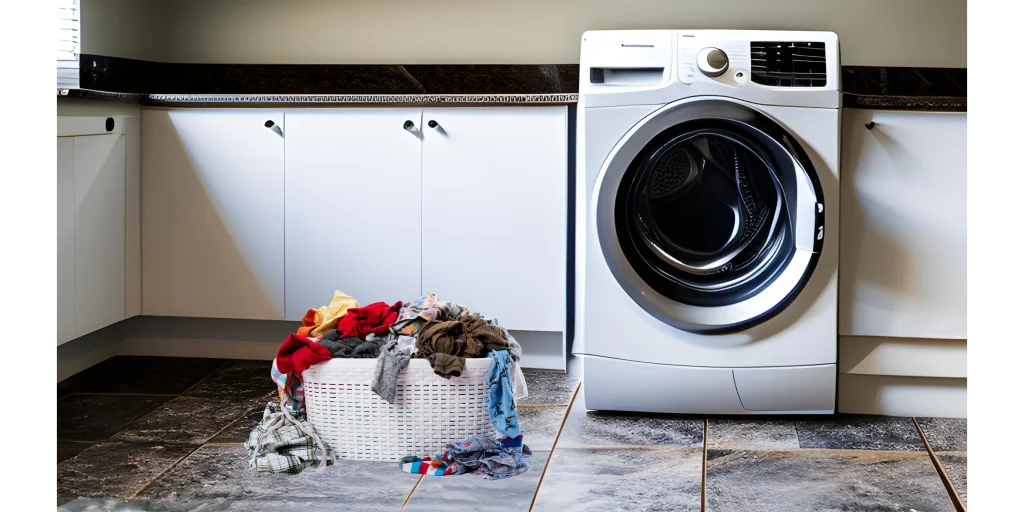
Common Washing Machine Faults
Washing machines are an essential part of our daily lives, simplifying laundry and saving us precious time. However, like any appliance, they can develop issues over time. But don’t fret! Many common washing machine faults can be resolved with a bit of know-how and the right tools. In this comprehensive guide, we’ll delve into the most common washing machine faults and provide detailed advice on how to address them.
Washing Machine Won’t Drain
One of the most common washing machine faults is when the machine won’t drain. This can be particularly troublesome if you’re in the middle of a wash cycle and your machine is filled with water. The issue could be due to a blockage in the drain hose or pump, or a problem with the pump itself. Blockages can be caused by small items like coins or socks that have been accidentally left in pockets, or by a build-up of lint or detergent. If the pump is the issue, it might be that it’s worn out and needs replacing. Check out our step-by-step guide on how to identify and resolve these issues.
Washing Machine Won’t Spin
Another of the most common washing machine faults is when the machine stops spinning. This can leave your clothes soaking wet and make it impossible to get a good clean. This issue could be due to an overloaded drum, a worn-out drive belt, or a problem with the motor.
Overloading the drum can put too much strain on the machine, causing it to struggle to spin. A worn-out drive belt can prevent the drum from spinning, even though the motor is running. And if the motor itself is the problem, it might be that it’s burnt out and needs replacing. We’ll delve deeper into each of these issues in future posts, providing detailed advice on how to fix them. You can also refer to our blog for more tips and advice.
Noisy Washing Machine
A noisy washing machine can be a real nuisance, especially if your machine is located near your living or sleeping areas. The noise can be caused by several issues, including unbalanced loads, loose components, or worn-out parts. An unbalanced load can cause the machine to shake and make a lot of noise during the spin cycle. Loose components can rattle or bang against other parts of the machine. And worn-out parts, like bearings or belts, can create a grinding or squeaking noise. In our upcoming posts, we’ll provide detailed advice on how to identify the cause of the noise and how to fix this common washing machine faults.
Washing Machine Won’t Start
There’s nothing more frustrating than loading up your washing machine, adding your detergent, setting the cycle, and then… nothing. The machine won’t start. This could be due to a problem with the power supply, a faulty start switch, or an issue with the timer control. If it’s a power supply issue, it might be that there’s a problem with the outlet or the machine’s power cord. If it’s the start switch or timer control, it could be that they’re worn out and need replacing. We’ll provide a detailed guide on how to troubleshoot and fix these issues in future posts. For immediate help, you can visit our Contact Us page to get in touch with our team of experts.
Maintaining Your Washing Machine
Regular maintenance can prevent many common washing machine faults. This includes cleaning the drum, filter, and detergent drawer, checking the hoses for leaks, and not overloading the machine. Over time, residue from detergent and fabric softener can build up in the drum and drawer, leading to unpleasant odours and potential blockages. The filter, which catches small objects like coins and lint, can also become blocked if not cleaned regularly.
Checking the hoses for leaks can help you spot and fix small leaks before they become big problems. And not overloading the machine can prevent a host of issues, including unbalanced loads, excessive noise, and problems with the spin cycle. In our upcoming posts, we’ll provide detailed advice on how to maintain your washing machine to keep it running smoothly. For more tips on appliance maintenance, you can check out our previous blog post on Appliance Maintenance Tips.
If you need to pull your machine out to inspect it exercise caution as the sudden movement can potentially cause damage to the connecting pipes, leading to leaks or breakage. It is advisable to proceed slowly and support the pipes adequately to minimize the risk of any plumbing mishaps.
New Cold Water hoses are available at Amazon https://amzn.to/43fKdkn
Yorkshire Appliances
While it can be frustrating when your washing machine isn’t working properly, many common washing machine faults can be fixed with a bit of DIY. However, if you’re not comfortable doing these repairs yourself, or if the problem persists, it’s best to call in a professional.
At Yorkshire Appliances, we offer efficient and cost-effective appliance repairs for a wide variety of appliances, including washing machines. Our flat-rate call-out charge covers the inspection of the appliance, labour-only repairs, and returning to fit parts. And for bookings made before 10:00 a.m., we even provide same-day service!
Stay tuned for our upcoming posts, where we’ll dive deeper into each of these common washing machine faults, providing detailed troubleshooting tips, repair advice, and suggesting relevant affiliate products to help you get your washing machine back in top shape.
Remember, whether you’re tackling a repair yourself or calling in the professionals, Yorkshire Appliances is here to help. We’re more than just a business; we’re a family. We pride ourselves on our good old-fashioned customer service, always going the extra mile to ensure you have the best possible experience.
As Amazon and eco-mate Associates, we earn from qualifying purchases. The links provided in this article are affiliate links, which means I may receive a commission if you make a purchase through these links. You are under no obligation to use these links when making a purchase.
